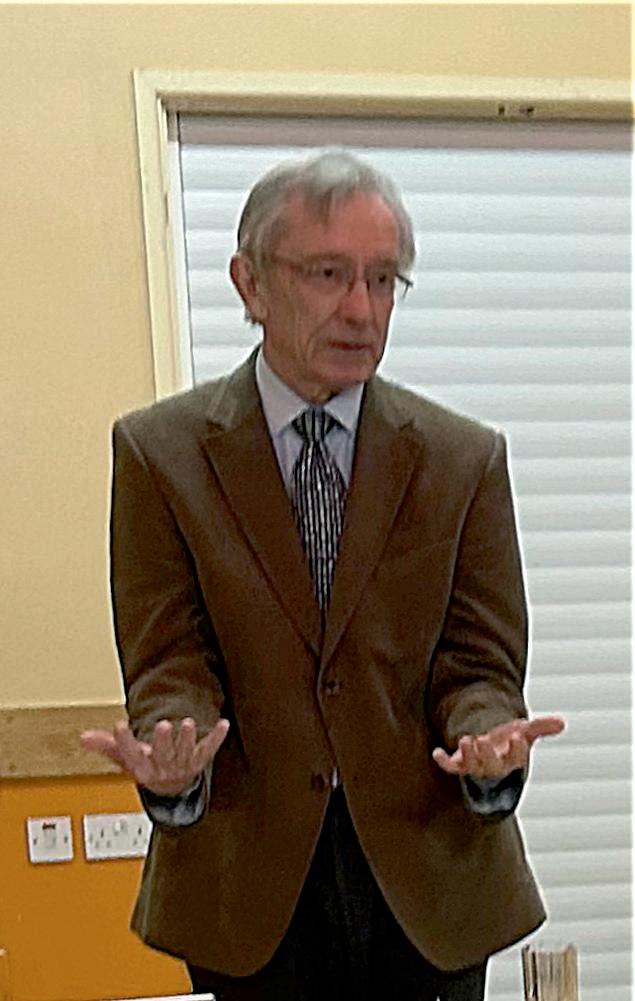
2 minute read
Latest News from Glenfield Park WI
Pam Wilson
IN MARCH, we were treated to a very interesting talk given by Mr Ken Kelly.
Advertisement
His subject was all about women who wouldn’t say no and their efforts to be allowed to compete in the Olympics. A hard fought battle over many years for inclusion. Although there are still some inequalities to be overcome and the advent of the challenge of transgender is making them even more difficult.
In 1896 the inaugural Modern Olympic Games featured no women at all. The next games coincided with the Paris Great Exhibition, women were allowed in a few sports, croquet, golf, tennis, sailing and equestrianism. Of just over 1,000 competitors only 22 were women. In the early 1920’s women arranged their own Olympics with their own sporting federation but were persuaded to re-join the men.
From 1928 the female contingent was around only 10% that of the men, by 1988 this had increased to about 1/3 but these days the ratio is nearer 50:50.
Women’s Olympic sport has had so many challenges to contend with. In the early years it was inappropriate for women to be seen to sweat so many sports were excluded for them. Gradually through the 1920’s and 1930’s more events were included. In 1928 the 800 metres had resulted in 7 runners collapsing with fatigue at the finish so this event was not permitted again until 1960. It was 1984 before the marathon was included for women. Strangely boxing was contested in 1904 but excluded 8 years later. It never reappeared for a century.
During the Cold War the Russians and Iron Curtain countries used drugs to enhance women’s performances to such an extent that in the 1970’s sex tests were introduced whereby women had to prove they were not men. This involved appearing before a medical board and undergoing intrusive examinations. The use of these drugs often resulted in sterility and other conditions in later years. All for the kudos of the Eastern Block beating the other nations of the World especially the USA and Great Britain. Women were being used as political pawns.
Whilst the actual sportswomen competing has reached a kind of parity the various committees running the sports federations are very male dominated so there is still much to be achieved.
Over the years there have been many remarkable women who have achieved great results and proved they deserved to be included in the Olympic Games.
Recording animal and plant life in burial grounds
CARING for God’s Acre is the conservation charity for Burial Grounds across the UK
Because burial grounds have been a dedicated green space for years, sometimes centuries, their plant and animal life is often rich and diverse. We are encouraging visitors to burial grounds to record species that they encounter and these records can then be added to a database which will be accessible by all and will build into a picture of what has been seen, when and how frequently.
Anyone can make a recording by noting down some details – all records are useful, even of common plants, grasses, birds or other wildlife as they help to monitor the rise or decline of species over a period of years. Making a record is simple, there are just four things to make note of:
Who – the recorder’s full name
What – the common (or scientific) name of the species you round – eg. swift, ladybird, daisy…
Where -the name, address and/or grid reference for the site you visited
When – include the day, month and year
We encourage most recorders to submit their records using the iNaturalist app. The app can help with species identification, the process is more user-friendly and you can get all the work done out in the field rather than typing up at home afterwards.
You need to join the Beautiful Burial Grounds activity before submitting records and all of this can be done within the app.
The records must be verified by an expert before they can be submitted to the National Biodiversity Network (NBN) Atlas.
The speed of this process depends on availability of expert verifiers and varies according to species group and geographic location. Please visit the Burial Grounds Portal on the NBN to see if there are already records for your site!








